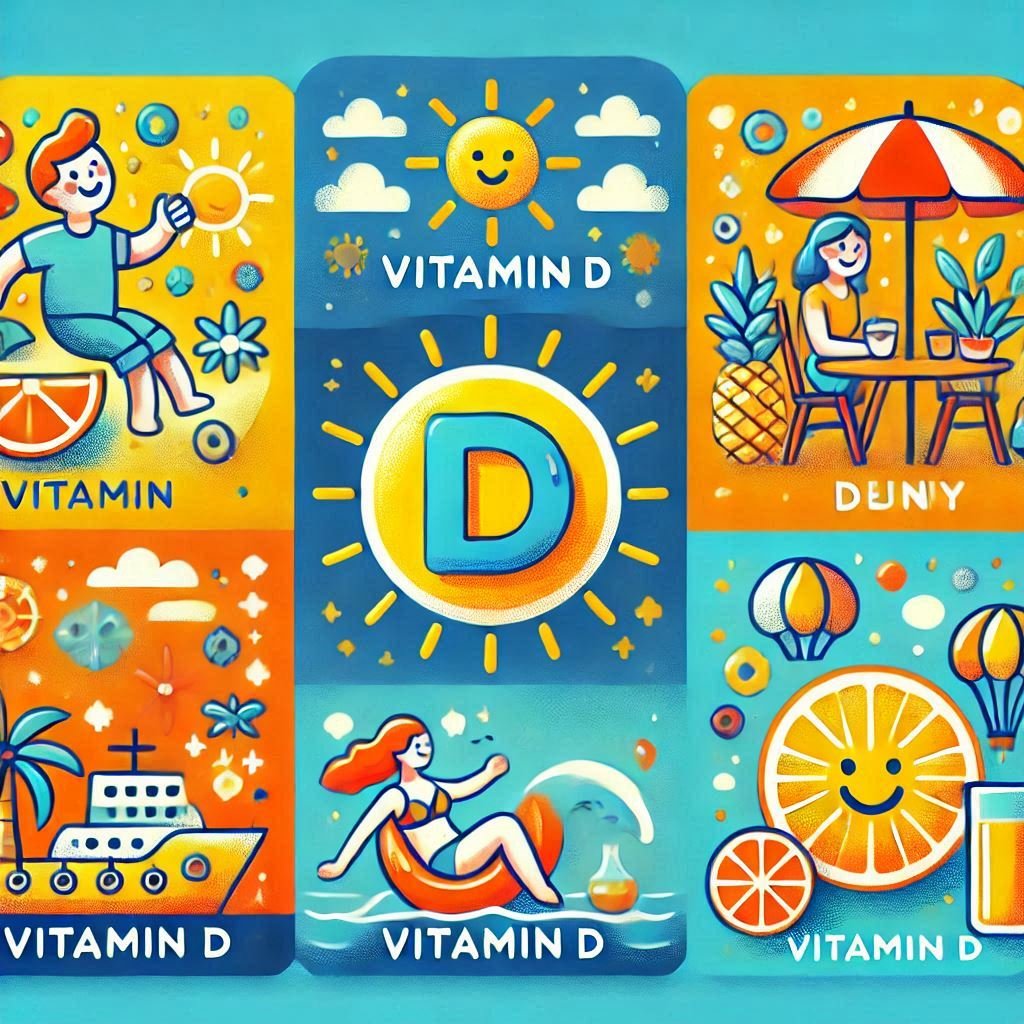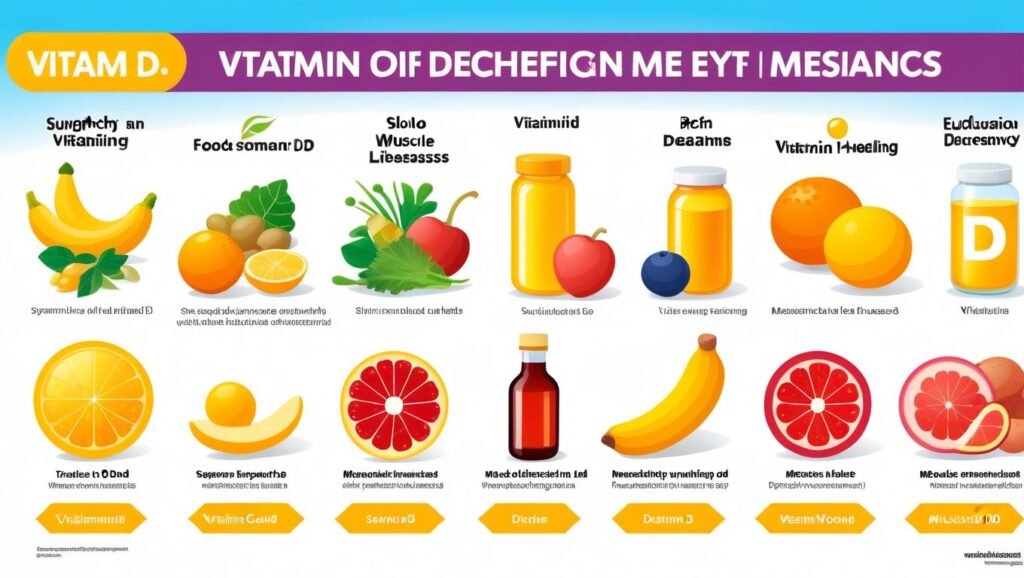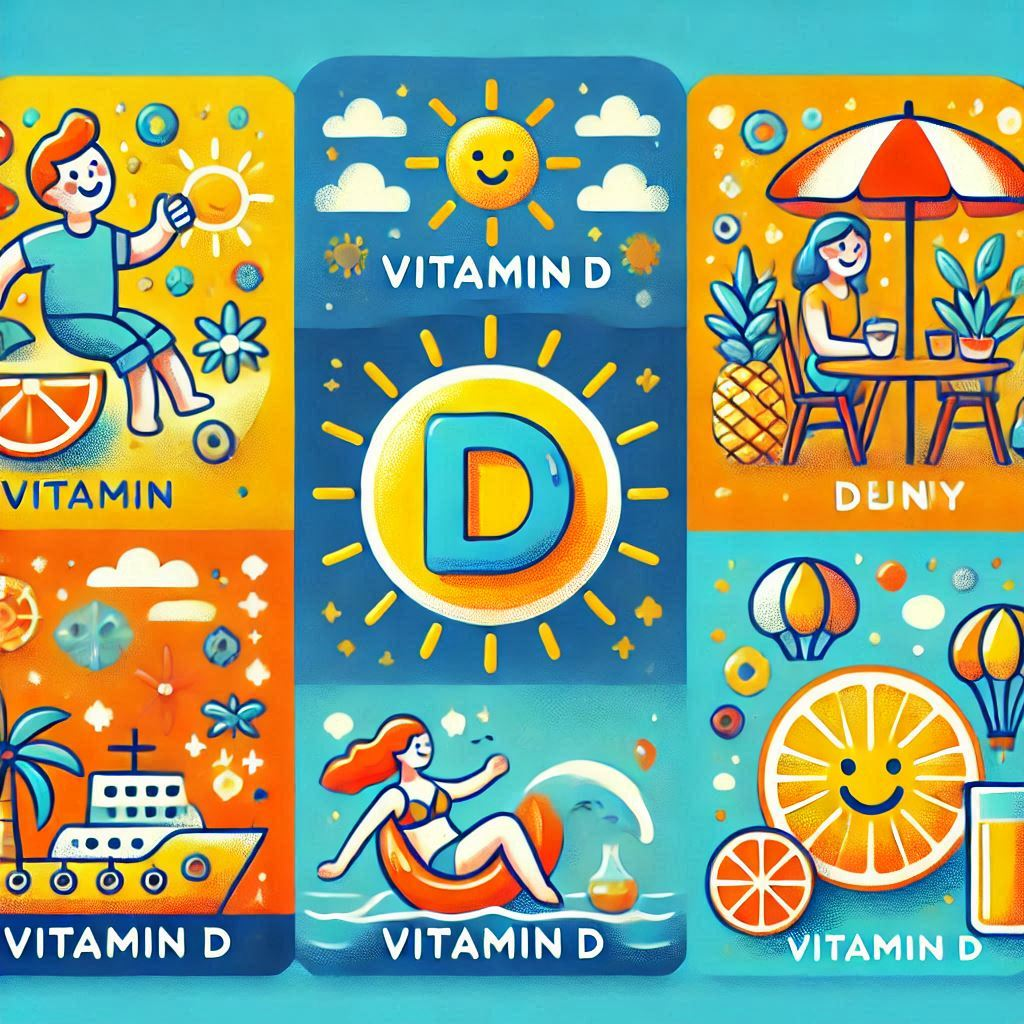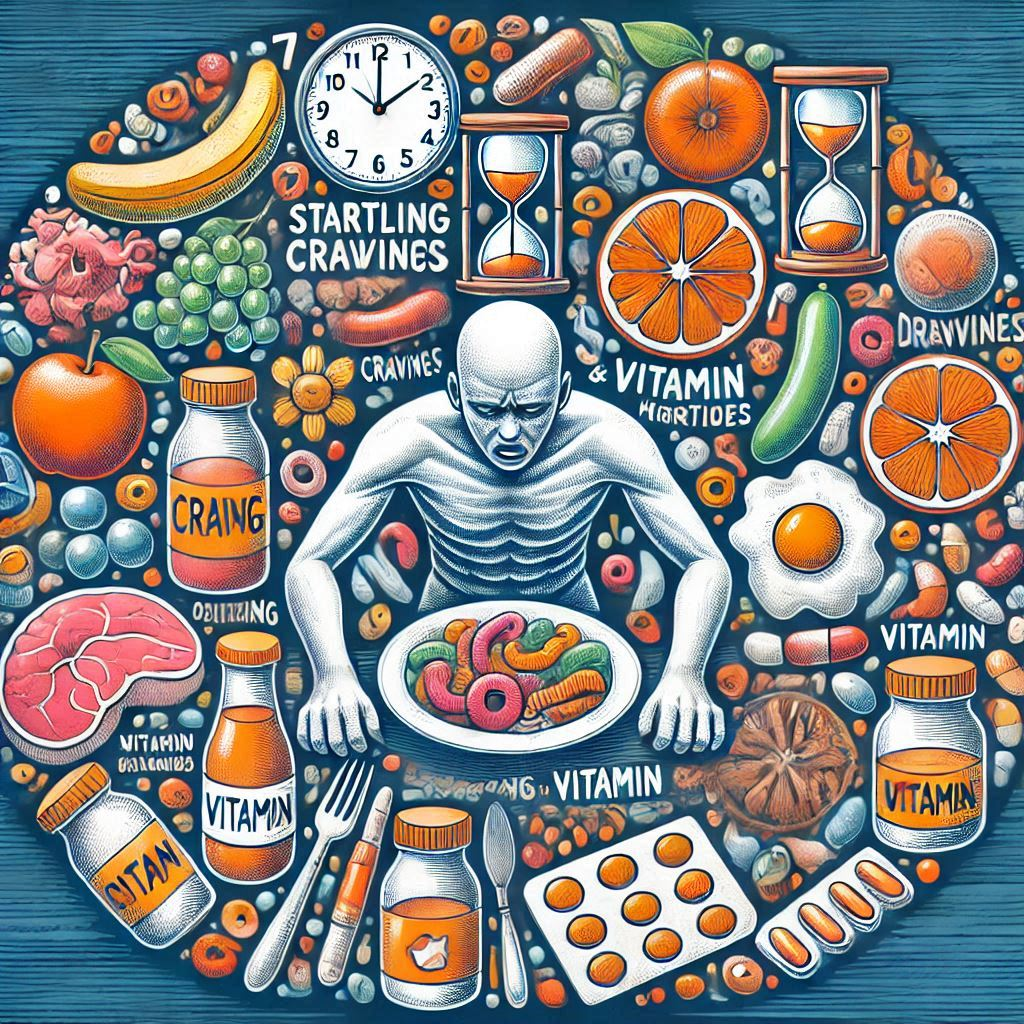Amazing Signs you need more Vitamin D: fatigue, bone pain, muscle weakness, mood changes, hair loss, and slow wound healing. Learn how to boost your levels.


Introduction
Brief Overview of the Importance of Vitamin D
Vitamin D is a crucial nutrient that plays a vital role in maintaining overall health. It helps the body absorb calcium, which is essential for strong bones and teeth. Vitamin D also supports immune function, reduces inflammation, and promotes muscle function. Adequate levels of vitamin D are necessary for maintaining optimal health and preventing various health issues.
Explanation of How Vitamin D Deficiency Can Affect Health
Vitamin D deficiency can lead to a range of health problems. Without sufficient Vitamin D, the body cannot absorb enough calcium, leading to weakened bones and an increased risk of fractures. Deficiency can also result in muscle weakness, fatigue, and a weakened immune system. Additionally, low levels of vitamin D have been linked to mood disorders, such as depression, and impaired cognitive function.

Sign 1: Fatigue and Tiredness
How Low Vitamin D Levels Contribute to Fatigue
One of the most common symptoms of vitamin D deficiency is fatigue and tiredness. Vitamin D plays a role in energy production, and low levels can lead to decreased energy and persistent feelings of tiredness. This can affect daily activities and overall quality of life.
Tips for Boosting Energy Levels
- Increase Sun Exposure: Spend time outdoors in sunlight to boost vitamin D production.
- Dietary Sources: Include vitamin D-rich foods in your diet, such as fatty fish, fortified dairy products, and egg yolks.
- Supplements: Consider taking vitamin D supplements if you have difficulty getting enough from sunlight and diet.
Sign 2: Bone Pain and Weakness
The Role of Vitamin D in Bone Health
Vitamin D is essential for calcium absorption, which is crucial for maintaining strong and healthy bones. Without adequate Vitamin D, bones can become weak and brittle, leading to pain and an increased risk of fractures.
How Deficiency Leads to Bone Pain and Weakness
Low levels of vitamin D can result in a condition called osteomalacia in adults, which causes bone pain and muscle weakness. In children, severe deficiency can lead to rickets, a condition characterized by soft and weak bones.
Ways to Improve Bone Strength
- Calcium-rich foods: Consume foods high in calcium, such as dairy products, leafy greens, and fortified cereals.
- Weight-Bearing Exercises: Engage in activities like walking, running, and strength training to strengthen bones.
- Vitamin D Supplements: Take vitamin D supplements to ensure adequate levels for bone health.
Sign 3: Muscle Weakness
Connection Between Vitamin D and Muscle Function
Vitamin D is important for muscle function and strength. It helps regulate calcium levels in the muscles, which is necessary for muscle contraction and overall muscle health.
Symptoms of Muscle Weakness Due to Deficiency
Low levels of vitamin D can lead to muscle weakness, making it difficult to perform everyday tasks. This can result in a feeling of heaviness in the legs, difficulty climbing stairs, and an increased risk of falls.
Exercises and Diet Tips to Strengthen Muscles
- Strength Training: Incorporate resistance exercises, such as weightlifting, to build muscle strength.
- Protein-rich foods: Consume foods high in protein, such as lean meats, beans, and nuts, to support muscle growth.
- Vitamin D-rich foods: Include sources of Vitamin D in your diet to support muscle function.
Sign 4: Mood Changes and Depression
Impact of Vitamin D on Mood and Mental Health
Vitamin D plays a role in brain function and the regulation of mood. It is involved in the production of neurotransmitters, such as serotonin, which influence mood and emotional well-being.
How Deficiency Can Lead to Mood Swings and Depression
Low levels of vitamin D have been linked to an increased risk of mood disorders, including depression. Deficiency can result in mood swings, irritability, and feelings of sadness. Seasonal Affective Disorder (SAD), a type of depression that occurs during the winter months, is also associated with low Vitamin D levels due to reduced sunlight exposure.
Strategies for Improving Mental Well-Being
- Sunlight Exposure: Spend time outdoors in natural sunlight to boost vitamin D levels and improve mood.
- Healthy Diet: Eat a balanced diet rich in nutrients that support brain health, including omega-3 fatty acids, B vitamins, and antioxidants.
- Physical Activity: Engage in regular exercise, which can help improve mood and reduce symptoms of depression.
- Vitamin D Supplements: Consider taking Vitamin D supplements, especially during the winter months or if you have limited sun exposure.
Sign 5: Hair Loss
The Link Between Vitamin D and Hair Health
Vitamin D plays a crucial role in the health of hair follicles. It helps create new hair follicles, which are the tiny pores where new hair grows. Adequate levels of Vitamin D are essential for maintaining healthy hair growth and preventing hair loss.
How Deficiency Can Cause Hair Loss
A deficiency in Vitamin D can lead to hair loss, as it affects the health and function of hair follicles. Low levels of vitamin D have been linked to alopecia, an autoimmune condition that causes hair loss. Additionally, vitamin D deficiency can result in thinning hair and slower hair growth.
Tips for Promoting Hair Growth
- Increase Sun Exposure: Spend time outdoors in sunlight to boost vitamin D production.
- Dietary Sources: Include vitamin D-rich foods in your diet, such as fatty fish, fortified dairy products, and egg yolks.
- Supplements: Consider taking vitamin D supplements if you have difficulty getting enough from sunlight and diet.
- Hair Care: Use gentle hair care products and avoid excessive heat styling to protect hair health.
Sign 6: Slow Wound Healing
Role of Vitamin D in the Healing Process
Vitamin D is essential for the body’s healing process. It helps regulate the immune system and reduce inflammation, both of which are crucial for wound healing. Adequate levels of Vitamin D support the production of antimicrobial peptides, which help fight infections and promote healing.
How Low Levels Can Slow Down Wound Healing
Low levels of Vitamin D can impair the body’s ability to heal wounds effectively. Deficiency can lead to prolonged inflammation, increased risk of infection, and slower tissue repair. This can result in wounds taking longer to heal and an increased risk of complications.
Ways to Enhance Healing and Recovery
- Increase Vitamin D Intake: Ensure you get enough Vitamin D through sunlight exposure, diet, and supplements.
- Healthy Diet: Consume a balanced diet rich in vitamins and minerals that support healing, such as vitamin C, zinc, and protein.
- Proper Wound Care: Keep wounds clean and covered to prevent infection and promote healing.
- Stay Hydrated: Drink plenty of water to support overall health and the healing process.
How to Fix Vitamin D Deficiency
Dietary Sources of Vitamin D
Incorporate the following vitamin D-rich foods into your diet to help boost your levels:
- Fatty Fish: Salmon, mackerel, and sardines are excellent sources of Vitamin D.
- Fortified Foods: Many dairy products, plant-based milk, and cereals are fortified with Vitamin D.
- Egg Yolks: Eggs are a good source of Vitamin D, especially the yolks.
- Mushrooms: Some mushrooms, such as maitake and shiitake, contain Vitamin D, especially when exposed to sunlight.
Importance of Sunlight Exposure
Sunlight is a natural source of vitamin D. Spending time outdoors in direct sunlight helps the body produce Vitamin D. Aim for about 10–30 minutes of sun exposure several times a week, depending on your skin type and location. Remember to use sunscreen to protect your skin from harmful UV rays.
Vitamin D Supplements and Dosage Recommendations
If you have difficulty getting enough vitamin D from sunlight and diet, consider taking supplements. The recommended daily allowance (RDA) for Vitamin D varies based on age, sex, and health conditions. Generally, adults need about 600-800 IU (15-20 micrograms) per day. Consult with a healthcare provider to determine the appropriate dosage for your needs.
Conclusion
Recap of the 6 Signs of Vitamin D Deficiency
Vitamin D deficiency can manifest in various ways, including fatigue, bone pain, muscle weakness, mood changes, hair loss, and slow wound healing. Recognizing these signs and addressing them promptly is crucial for maintaining overall health.
Encouragement to Monitor and Maintain Healthy Vitamin D Levels
Regularly monitor your vitamin D levels through blood tests and ensure you maintain adequate levels through a combination of sunlight exposure, diet, and supplements. Taking proactive steps to address vitamin D deficiency can improve your health and well-being.
Final Thoughts on the Importance of Vitamin D for Overall Health
Vitamin D is essential for numerous bodily functions, including bone health, immune function, and mood regulation. Ensuring you get enough Vitamin D is vital for preventing deficiency-related health issues and promoting overall well-being. Embrace a balanced approach to nutrition and lifestyle to support your health and enjoy the benefits of optimal Vitamin D levels.
Read also: “14 Powerful Foods to Manage Blood Sugar.”





